Van Gogh: Poets and Lovers – National Gallery, London
Is Van Gogh: Poets and Lovers a once-in-a-lifetime show of the artist’s work? Perhaps. A shame then that my experience was marred by the crowds.
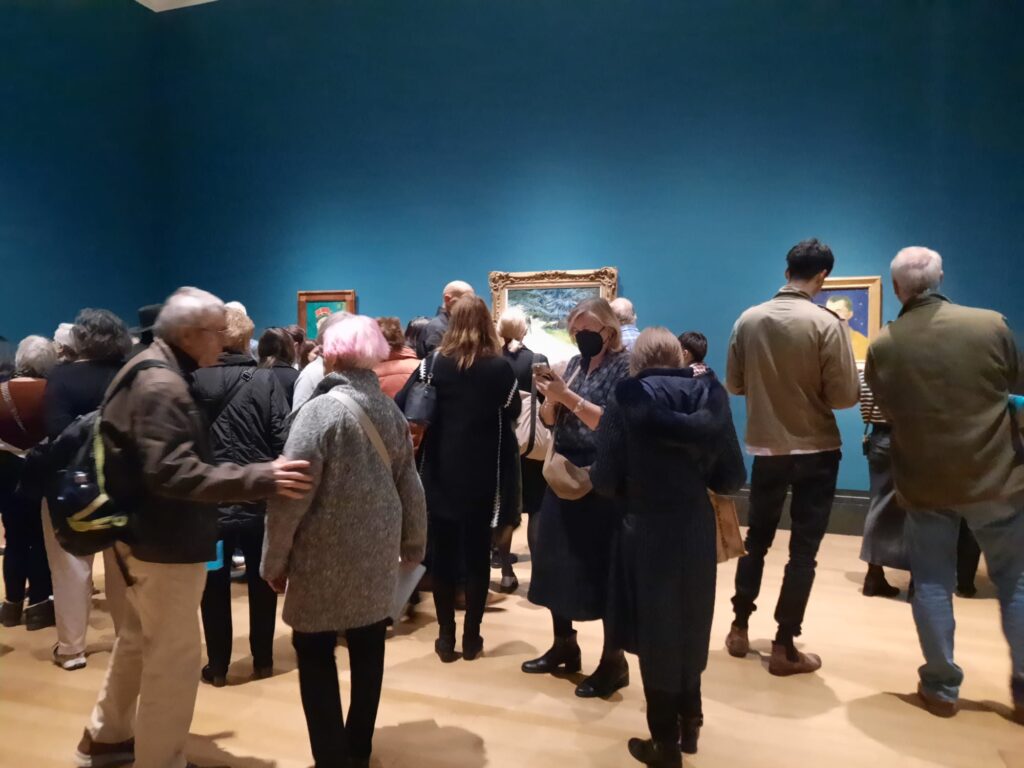
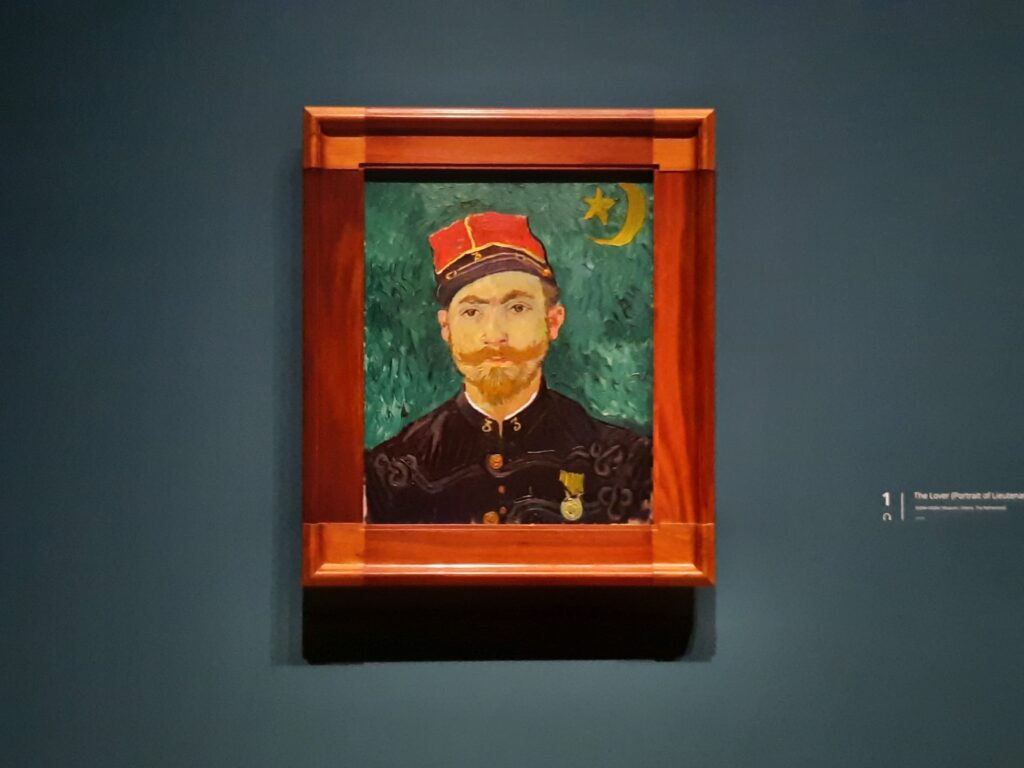
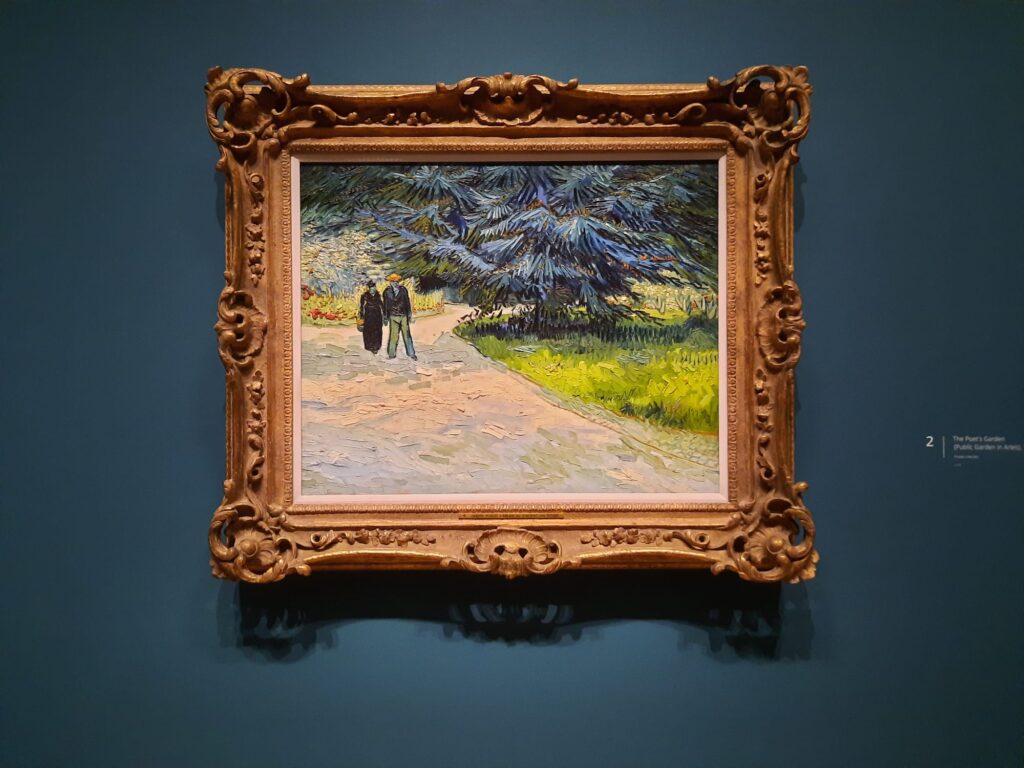
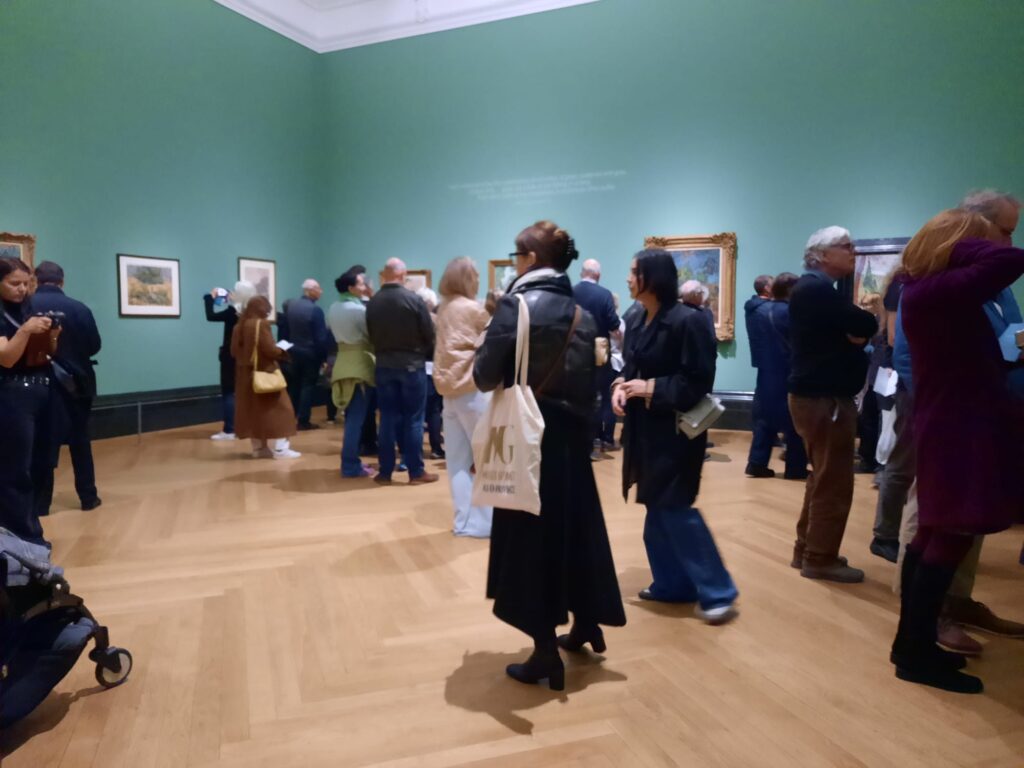
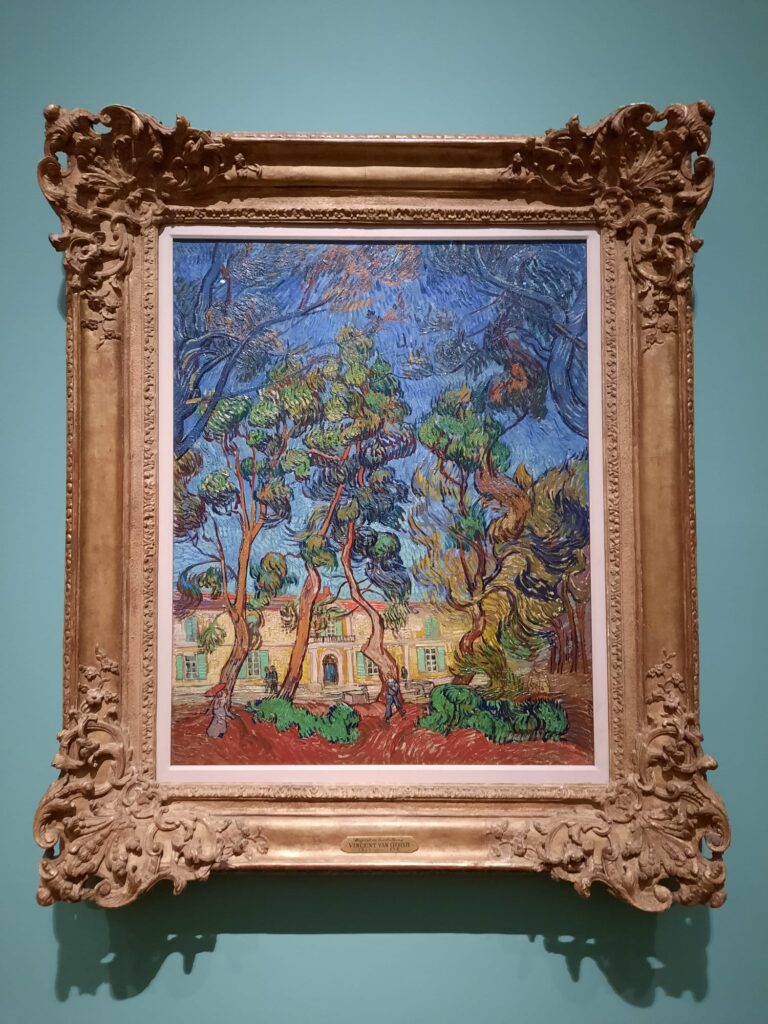
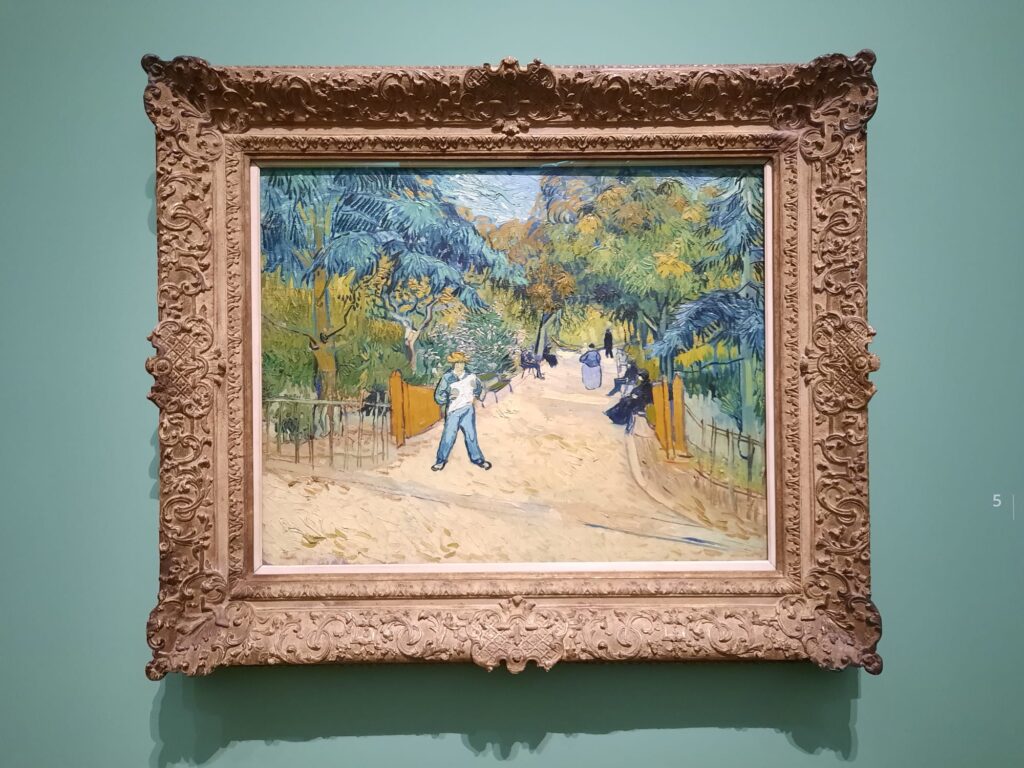
A National Gallery Blockbuster
I do fall into this trap a lot. I go to an exhibition at the National Gallery, am surprised that I find it too busy, and don’t really enjoy the experience. For me it was additionally stressful during COVID-19 restrictions (like here), but it’s never fun. I’m actually going to start today’s post by talking about the issue of overcrowding. Then we can move on to the exhibition.
There are a few reasons why overcrowding in museums/galleries is less than ideal. Firstly, it makes for a poor visitor experience. When a museum or a particular exhibition has a large number of visitors, it is difficult to have the sort of calm, peaceful experience we tend to expect. It can be noisy, we have to constantly navigate around others, and it’s difficult to spend as much time as we would like with particular objects or artworks. Seating is at a premium, and being on your feet and constantly buffeted by others can lead to museum fatique setting in. All those people can also be bad for the artworks, raising the temperature and humidity higher than is good for them. And finally it’s hard on staff dealing with crowds of visitors who are sometimes grumpy or overwhelmed to boot.
Why do museums/galleries/exhibitions get overcrowded? Well tourist numbers are back to pre-pandemic levels, and many countries and cities are sounding alarm bells about unsustainable numbers of visitors. Sometimes a particular cultural event or moment (like a film or TV series) can boost interest even further. So even ticketed museums may spend a lot of the time operating at capacity. That capacity is generally a well-understood number, though. There are well-established methods to model museum and exhibition spaces, track actual visitor behaviour and see hotspots and bottlenecks, and so on.
So if a particular institution’s ticketed exhibitions almost always feel uncomfortably busy, what conclusions should we draw? Is it a financial imperative – pushing the boundaries of comfortable capacity to protect the institution’s financial future? Is something consistently going wrong with exhibition planning? Or maybe there’s something about this institution’s exhibitions which encourages guests to stay longer, and therefore overlap with later timeslots? Keep these questions in mind as we look in more detail at Van Gogh: Poets and Lovers.
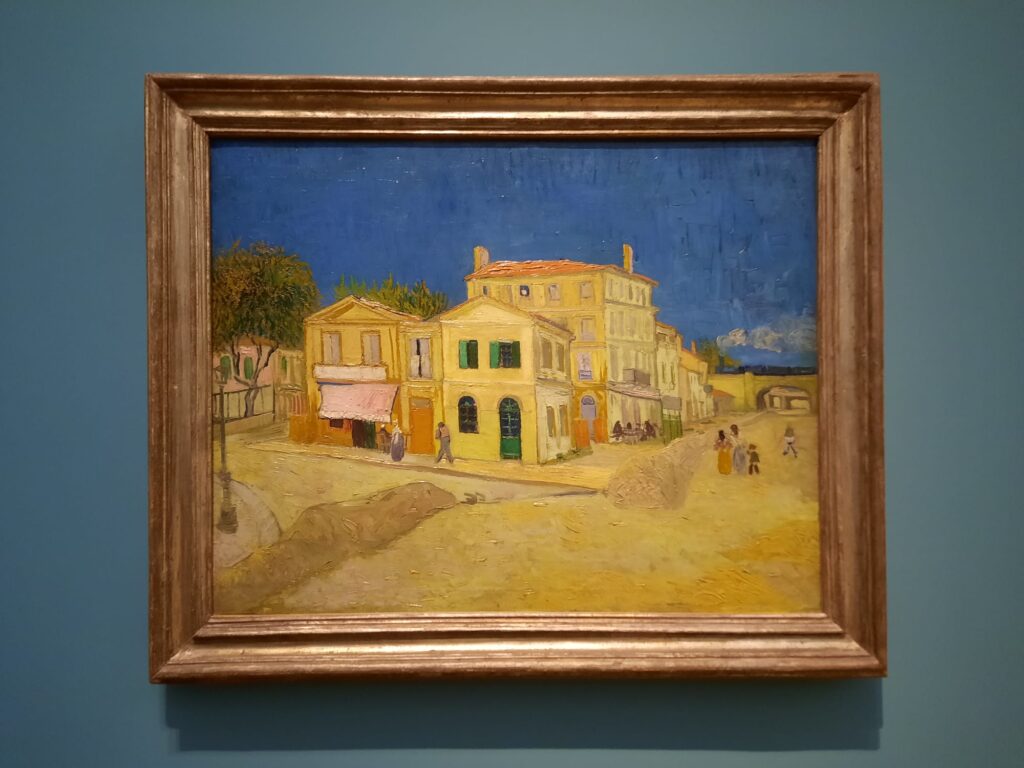
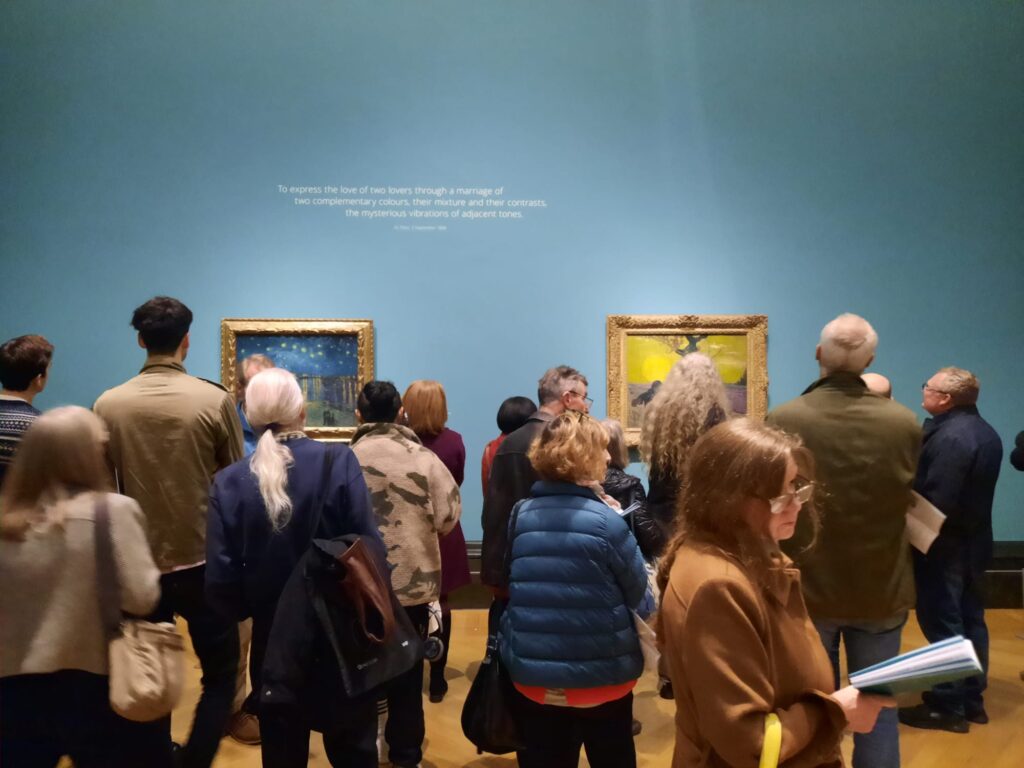
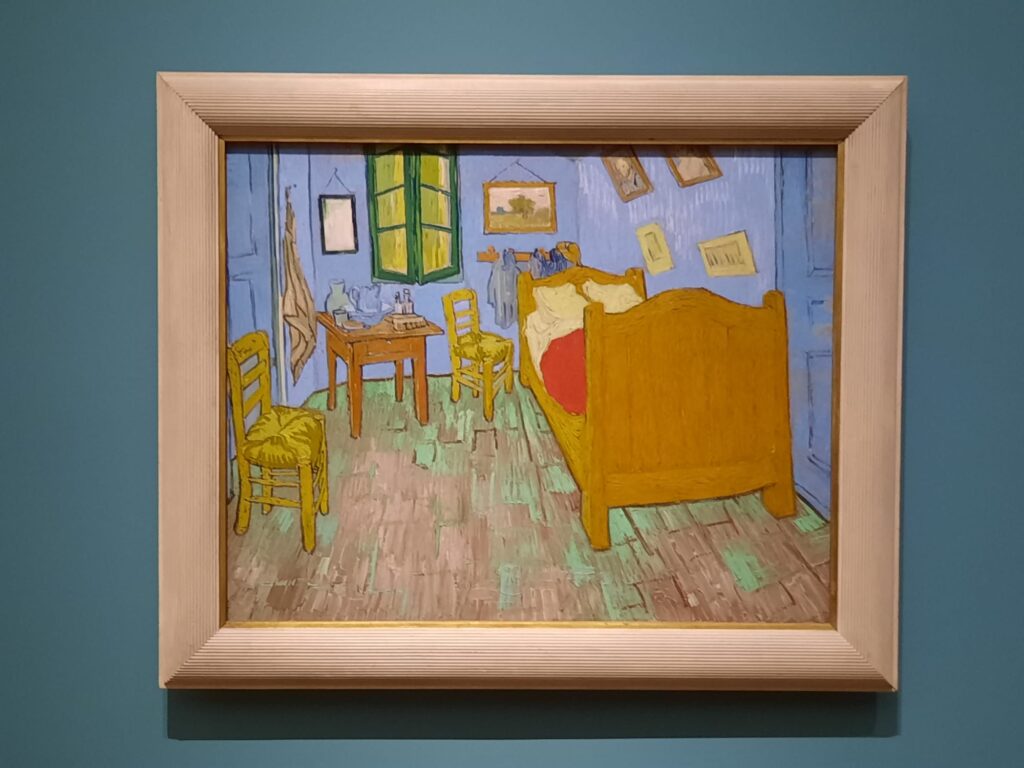
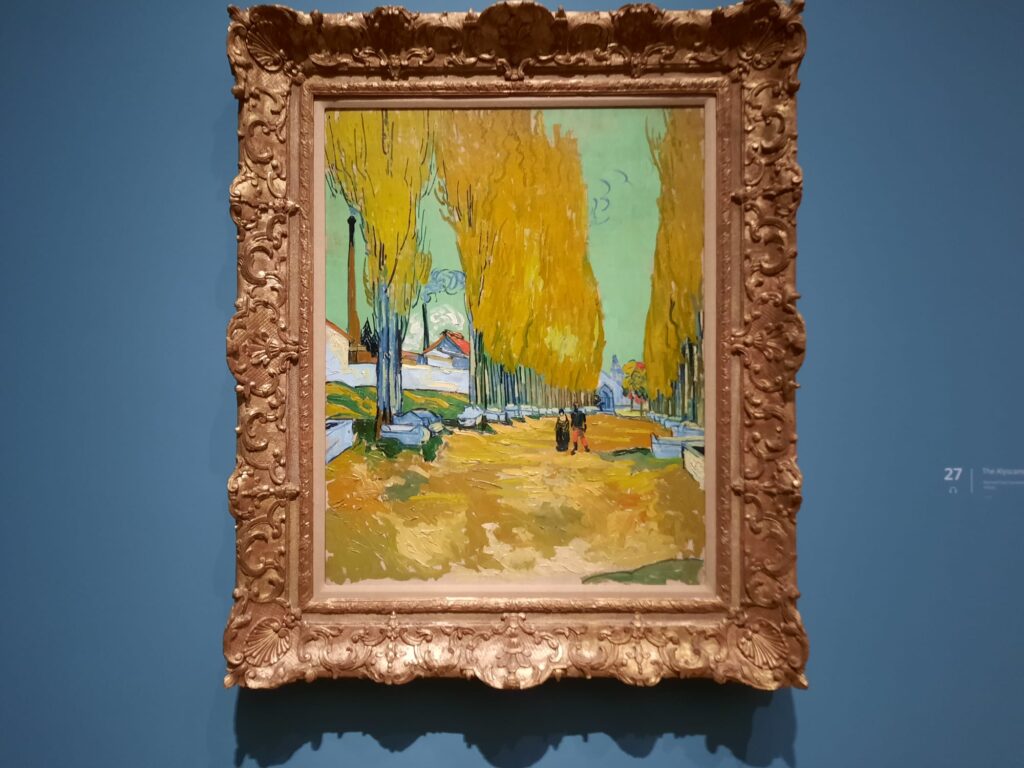
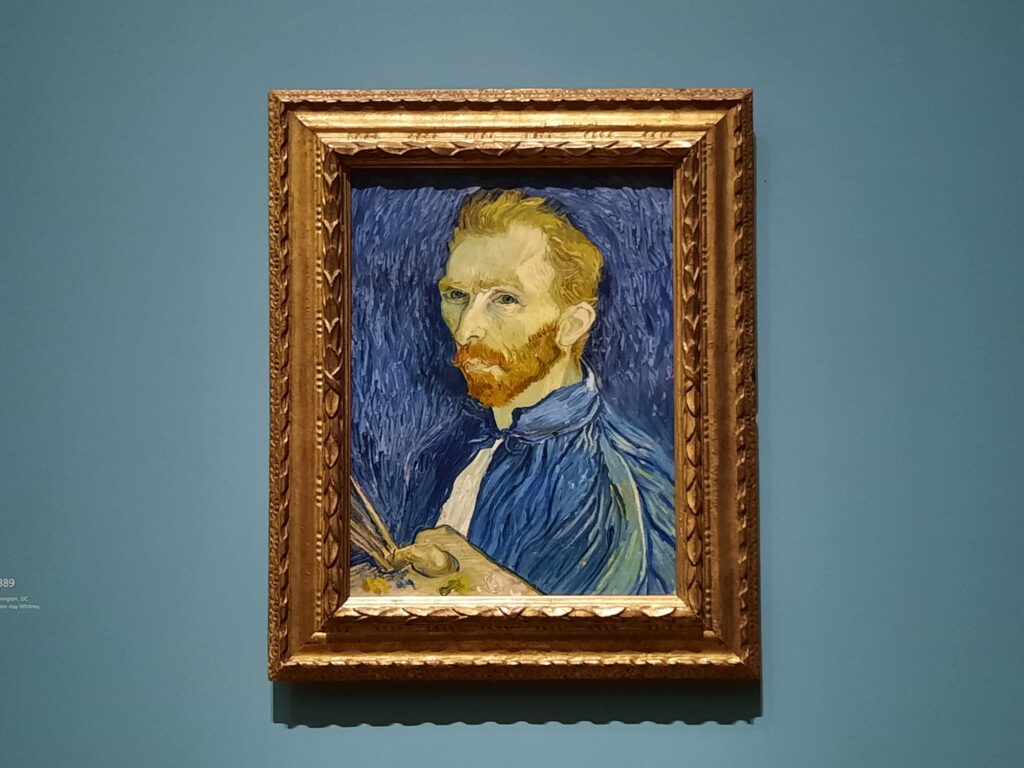
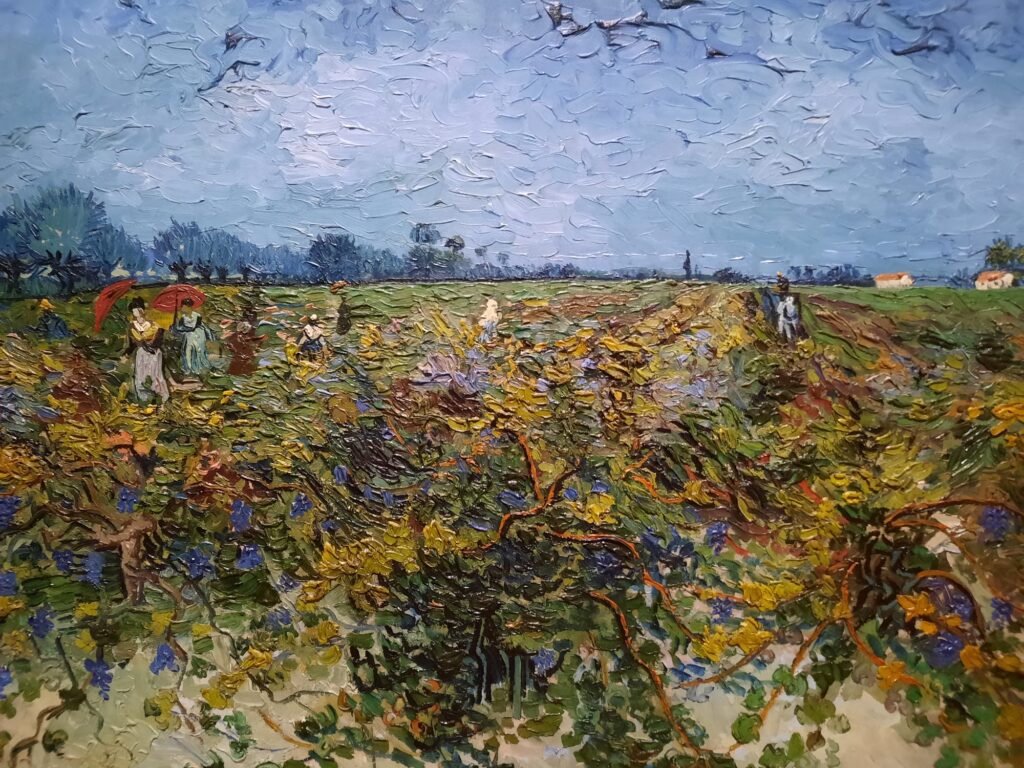
Reintroducing Van Gogh
In principle, this is a first rate exhibition. I’ve seen loads of five star reviews, so it seems the press had a lovely time on opening day. It’s a shame I run a small publication and also keep complaining, so am very unlikely to ever achieve the honour of an invite!
Van Gogh: Poets and Lovers centres on two years at the end of Vincent Van Gogh‘s life. In 1888 he moved to the South of France. In both Arles, and in Saint-Rémy-de-Provence where he received mental health treatment, he created extraordinary works. He planned his paintings carefully, thinking about the effects of the colours, the representation of his subjects, and how the finished works should be displayed.
The National Gallery have gathered an exceptional group of paintings and drawings for Van Gogh: Poets and Lovers. It takes an institution with this sort of clout (and budget) to bring them all together. Some are on loan for the first time, others from private collections are seen but rarely. There are versions of very famous paintings including of sunflowers and Van Gogh’s bedroom in Arles. No wonder everyone is clamouring to see it.
There are two primary reasons I can see for bringing together such a phenomenal group of paintings. The first is that it’s the National Gallery’s 200th birthday this year, 100 years since they acquired two major Van Gogh paintings, and it’s their first major Van Gogh exhibition. It would be a shame to underplay something like that. The second is that the curators very carefully make the case that we should set aside Van Gogh’s biography and focus on the art. Looking at him through a lens of mental ill health and personal and professional struggle may do Van Gogh the artist a disservice. Instead, the National Gallery describe a “less familiar Van Gogh…: an intellectual artist of lucid intention, deliberation and great ambition.”
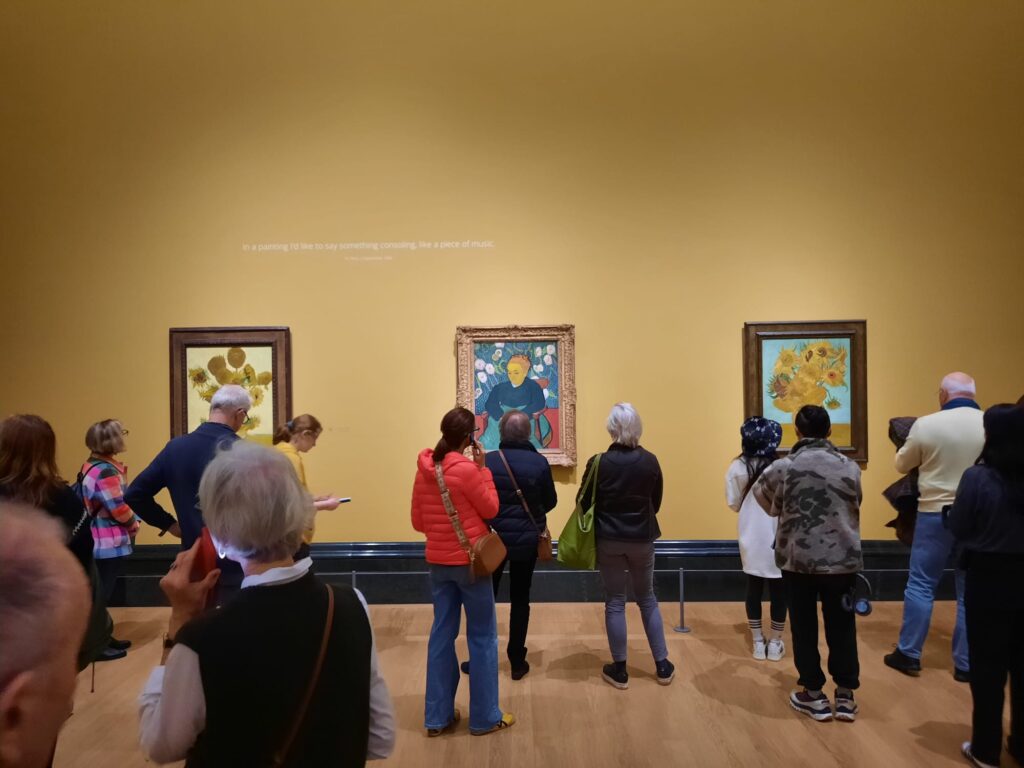
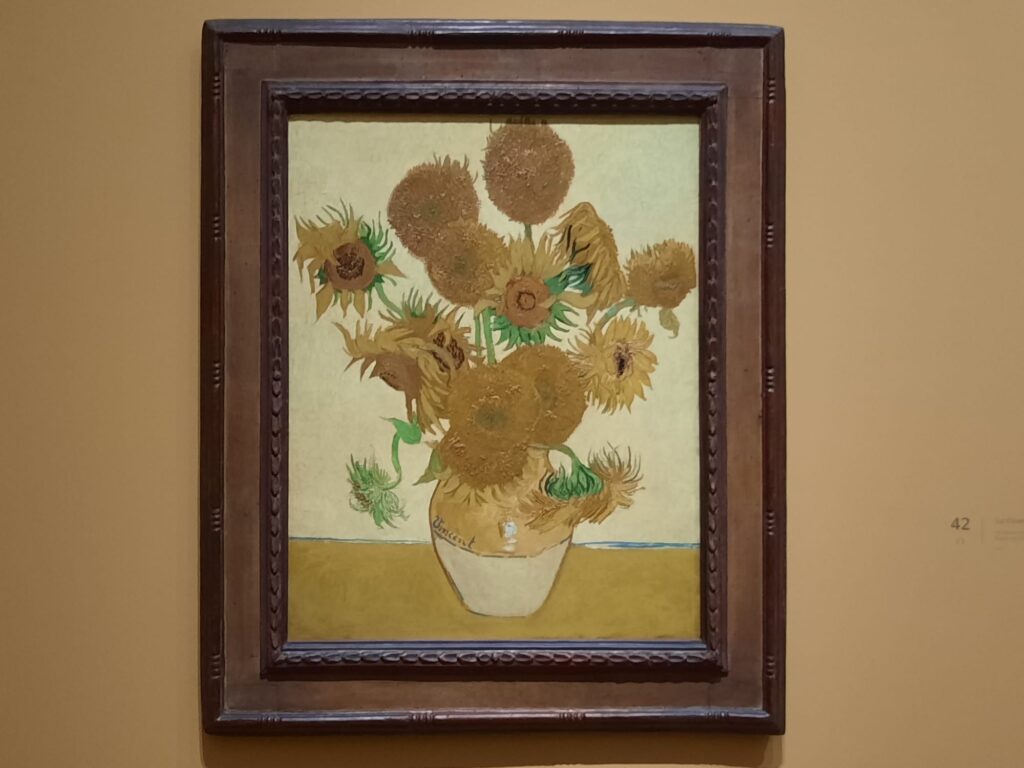
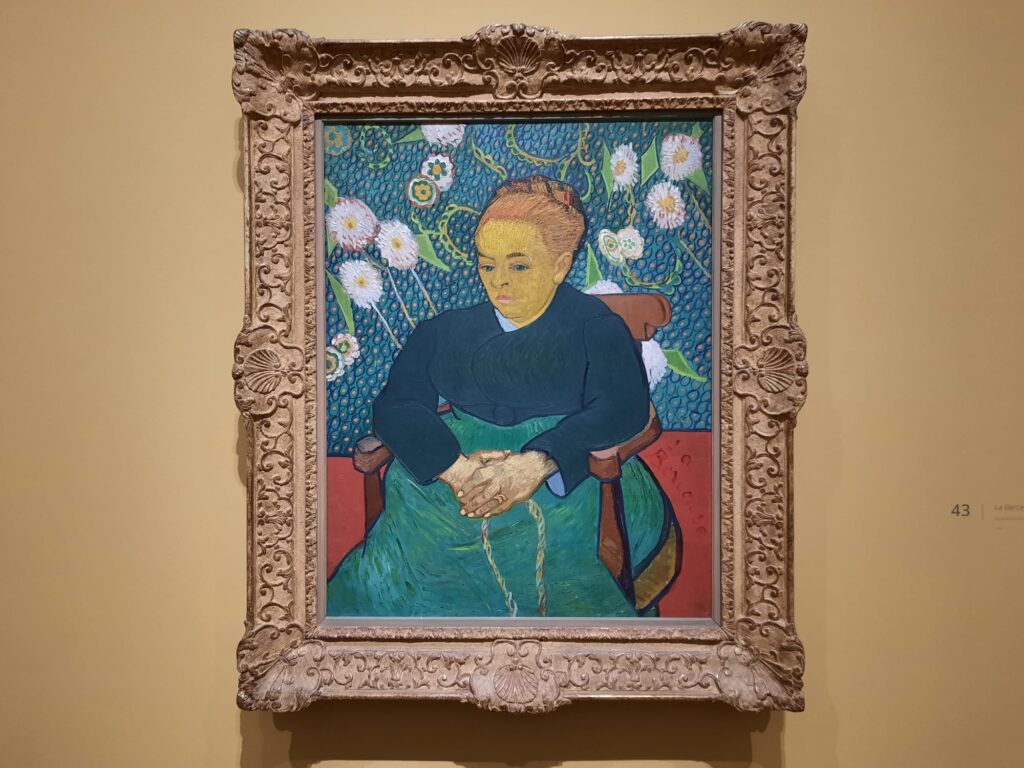
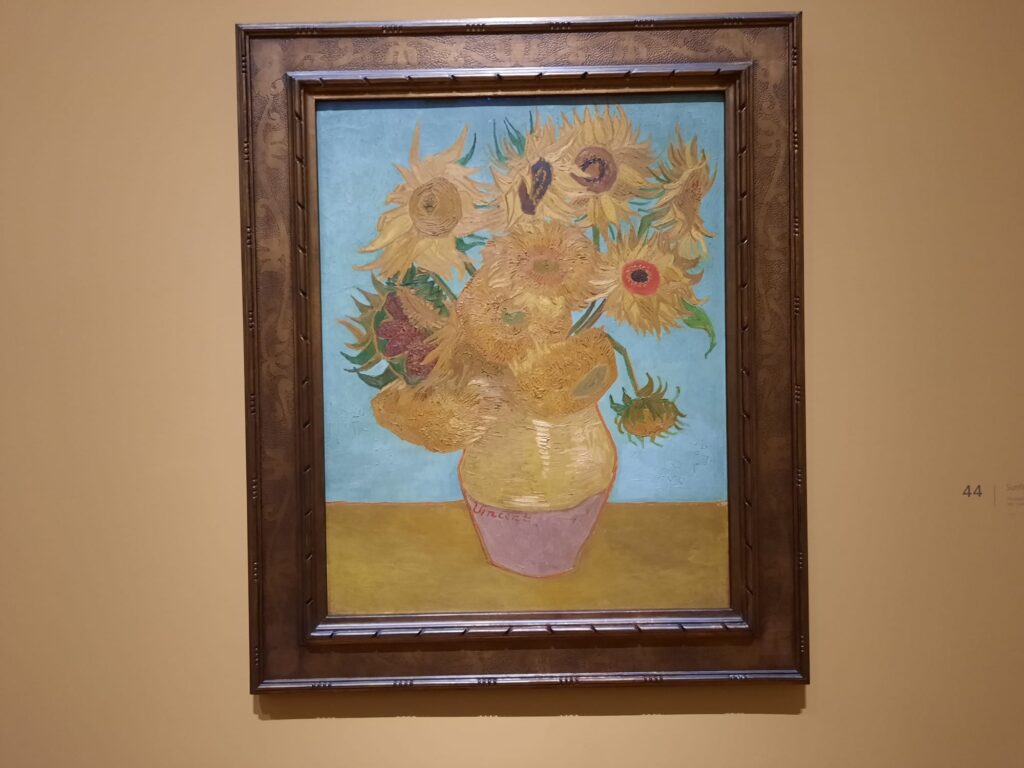
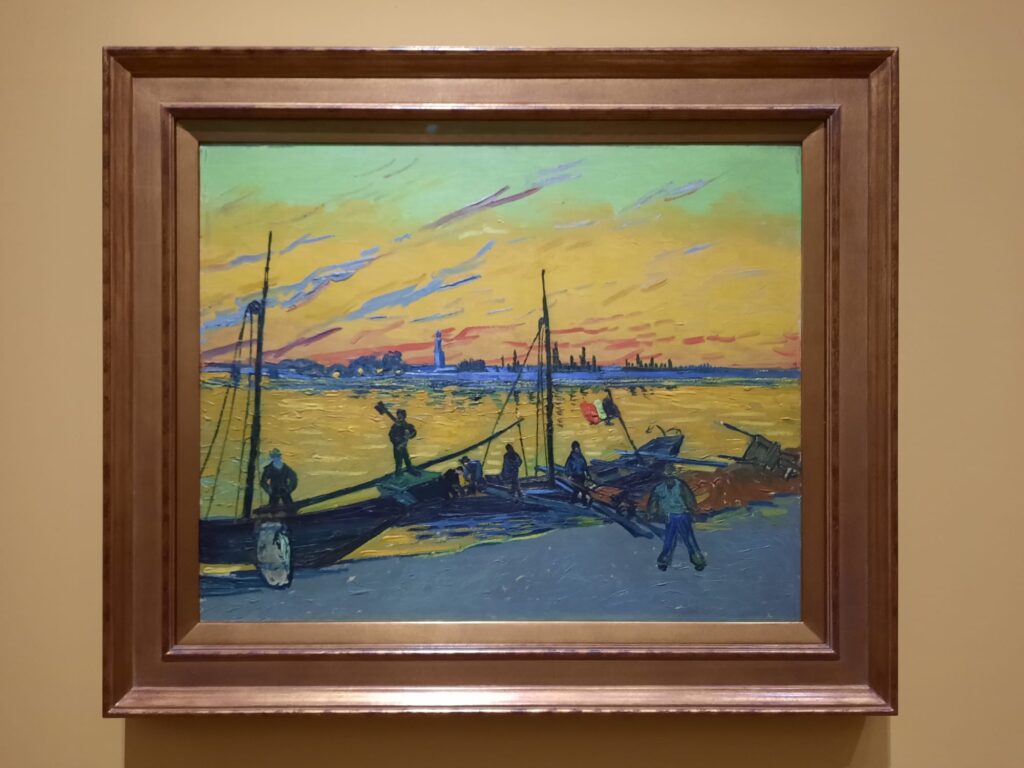
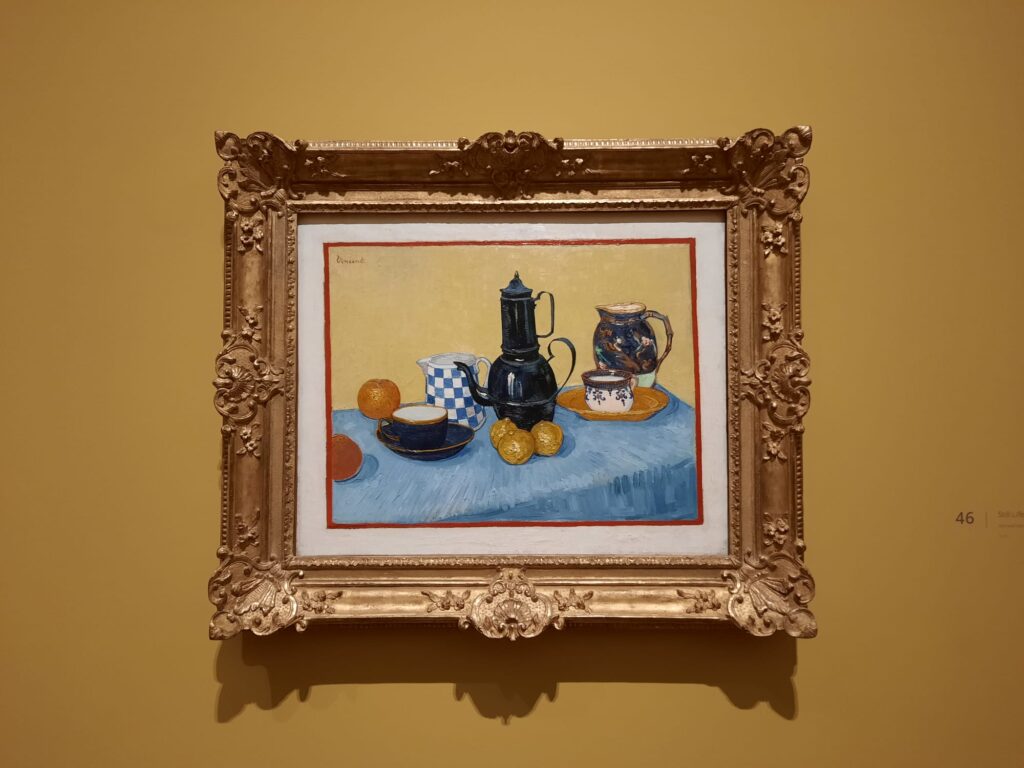
Van Gogh: Poets and Lovers
We understand a bit of the exhibition’s intent, now. What is the title about – Van Gogh: Poets and Lovers? I have to say it’s a little obscure. The exhibition handout (make sure you pick one up as all the painting descriptions are here) suggests that, in the South of France, Van Gogh chose local people to paint as archetypes like The Poet and The Lover. Maybe that’s true, but the point doesn’t seem to carry through the exhibition.
In fact the exhibition is arranged thematically without reference to poets and lovers after the first room, which contains one of each. We then move into interpretations of gardens, the Yellow House in Arles as an artist’s home, a small aside with drawings of Montmajour near Arles, painting as decoration, and variations on a theme.
The themes do relate well to the central premise. They show various ways in which, even when in an asylum (I use the language of the time here), Van Gogh was a careful planner who saw and explored artistic possibilities. He enjoyed unusual viewpoints of gardens, often with a specific reference underlying them. The scheme to turn the Yellow House into an artists’ colony didn’t come off, but he had put a lot of thought into creating the right environment. He also planned very carefully how different works could foster synergies when displayed together. The final room with different compositions along similar lines is like musical variations, exploring creative possibilities. It isn’t unbridled emotion and passion at the helm, but an artist’s mind at work.
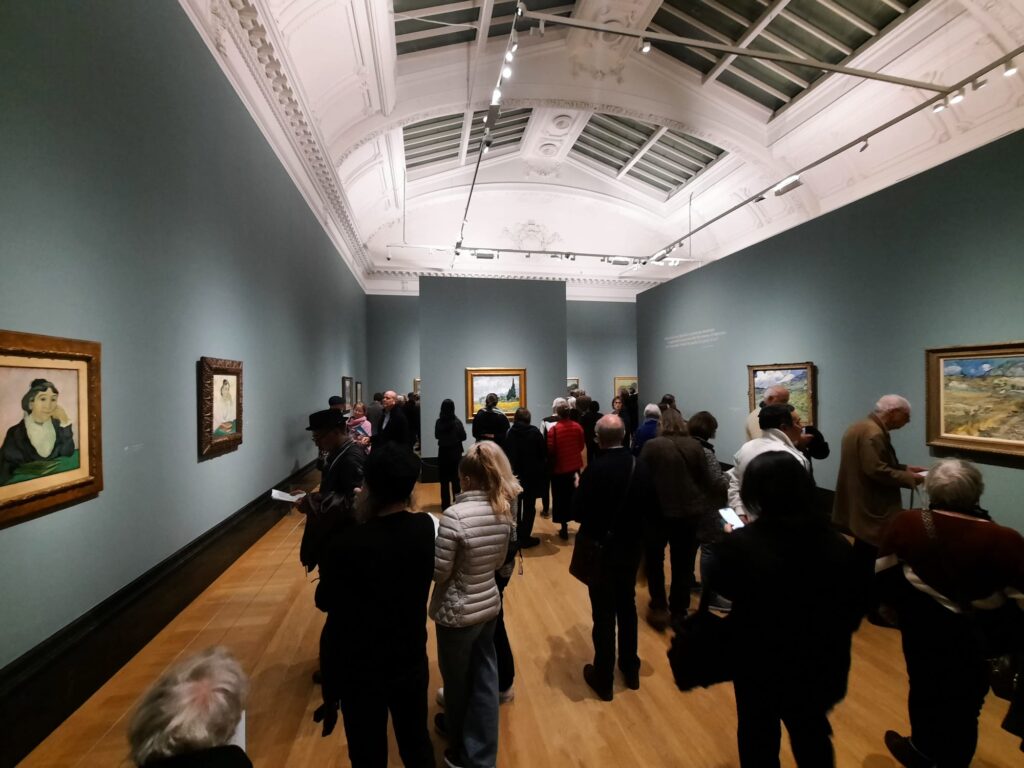
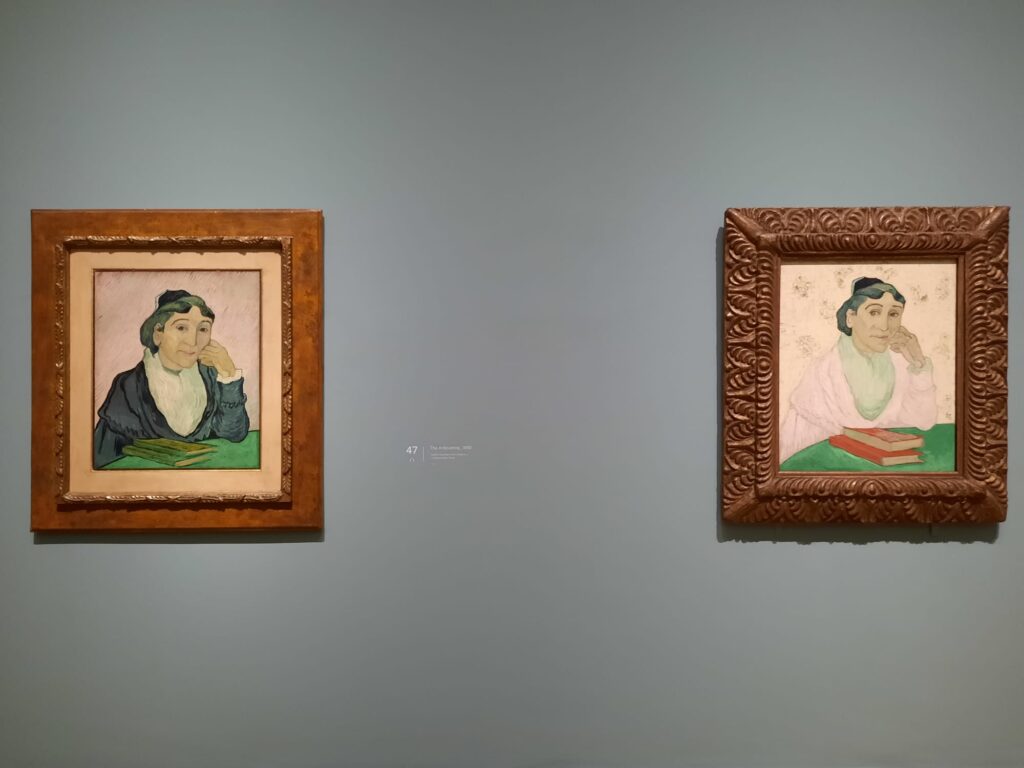
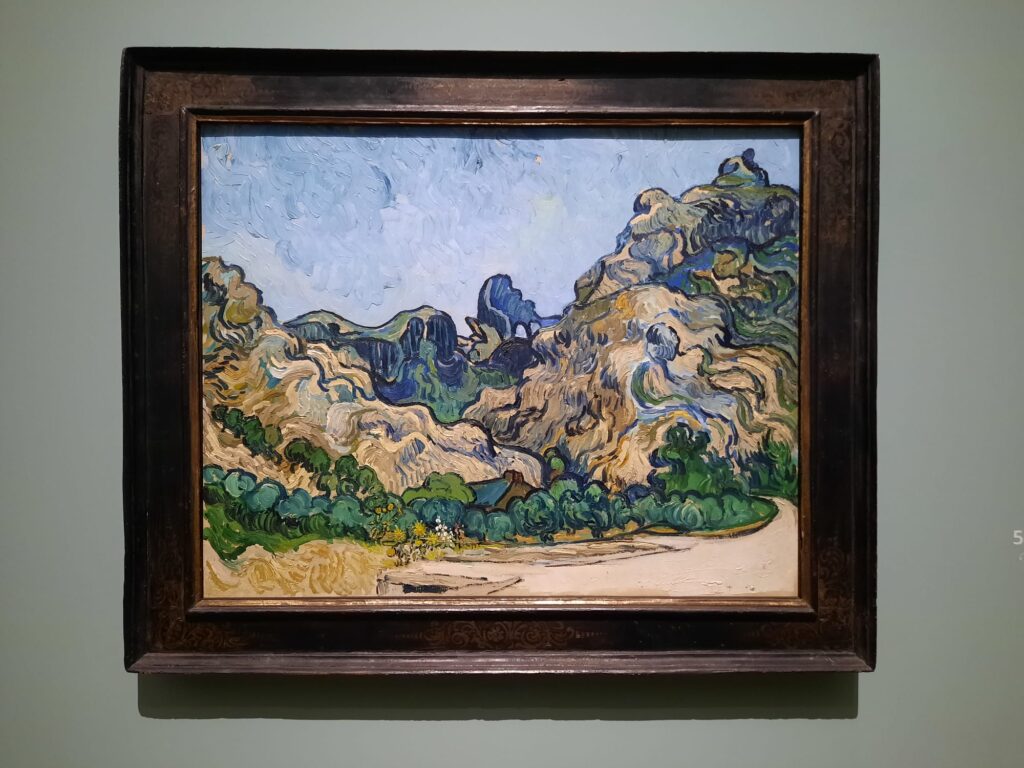
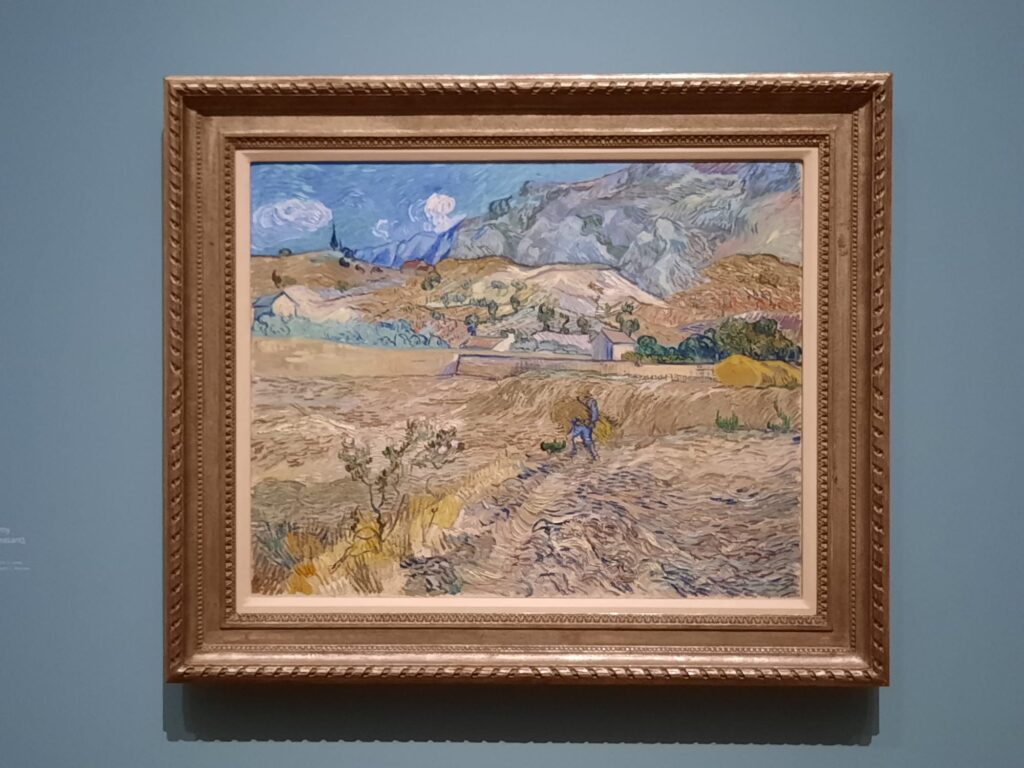
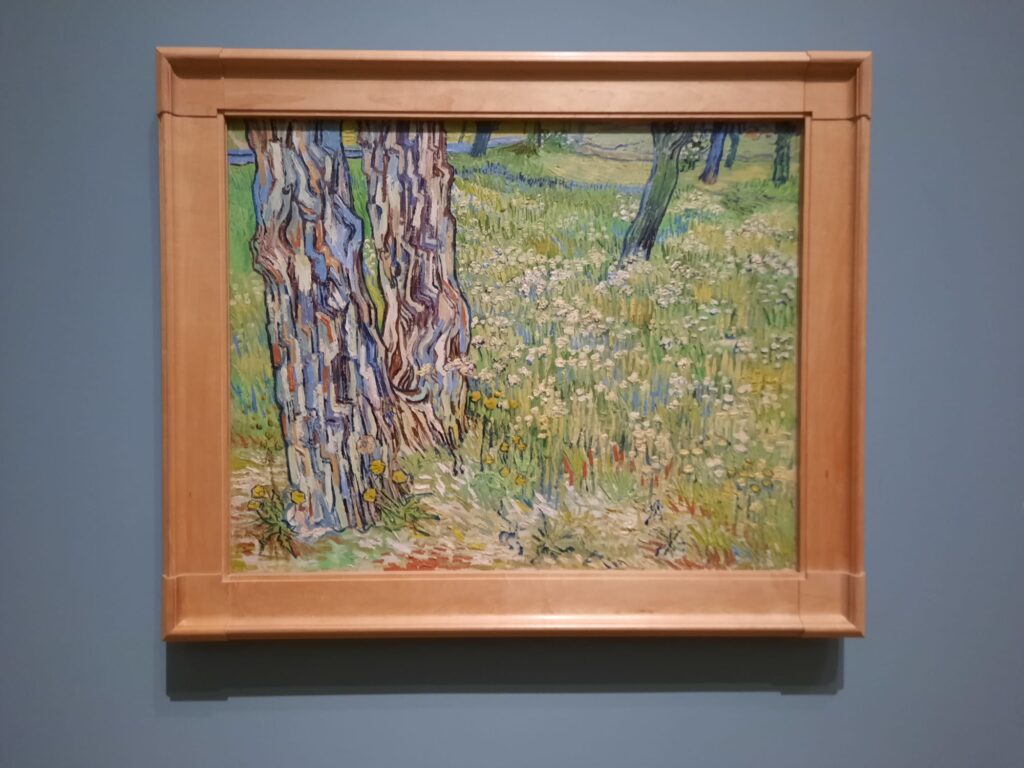
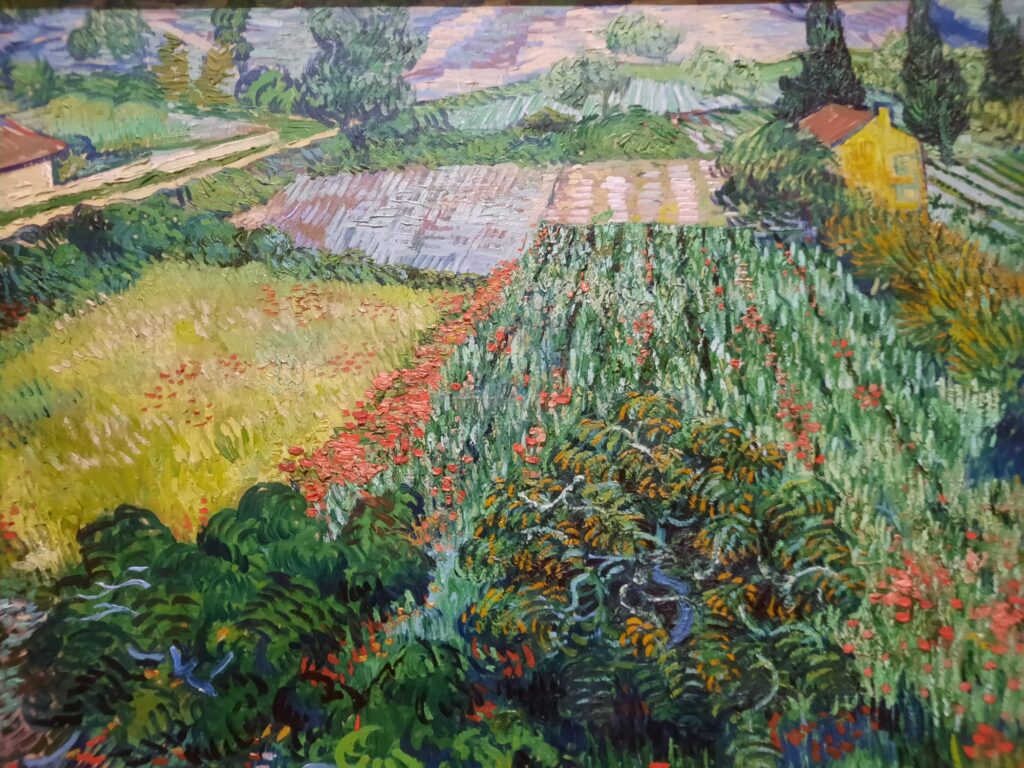
Can we Separate the Artist from the Man?
I see this curatorial viewpoint a little like a pendulum trying to swing back the other way. We tend to focus on the more lurid or emotive details of Van Gogh’s story, to the detriment of his reputation as an artist. The National Gallery don’t ignore his struggles, but try to reevaluate their impact on his art.
Ultimately, though, it’s difficult to separate the two. And I come back now to the volume of people in the exhibition when I visited. Seeing a reproduction of one of Van Gogh’s paintings hardly ever does it justice. In person, the colours are incredible, as are his thick brushstrokes and impasto. But you need to be able to take in the detail. And when you have to wait to get near every painting, or can only catch a glimpse, it’s difficult.
So I guess my point here is that I think this probably is a very good exhibition. I appreciated the curation into themes. The texts make interesting points. The selection of works is great. But for me there was a disconnect between what I was reading and what I was seeing. I’m sure there were moments of emotional intensity I was missing, because I couldn’t work around the room in order but had to navigate the crowds. And after many years I still haven’t cracked a way to enjoy a major National Gallery exhibition in relative peace and quiet.
Salterton Arts Review’s rating: 5/5 for the exhibition, 3/5 taking experience into account
Van Gogh: Poets and Lovers on until 19 January 2025
Trending
If you see this after your page is loaded completely, leafletJS files are missing.

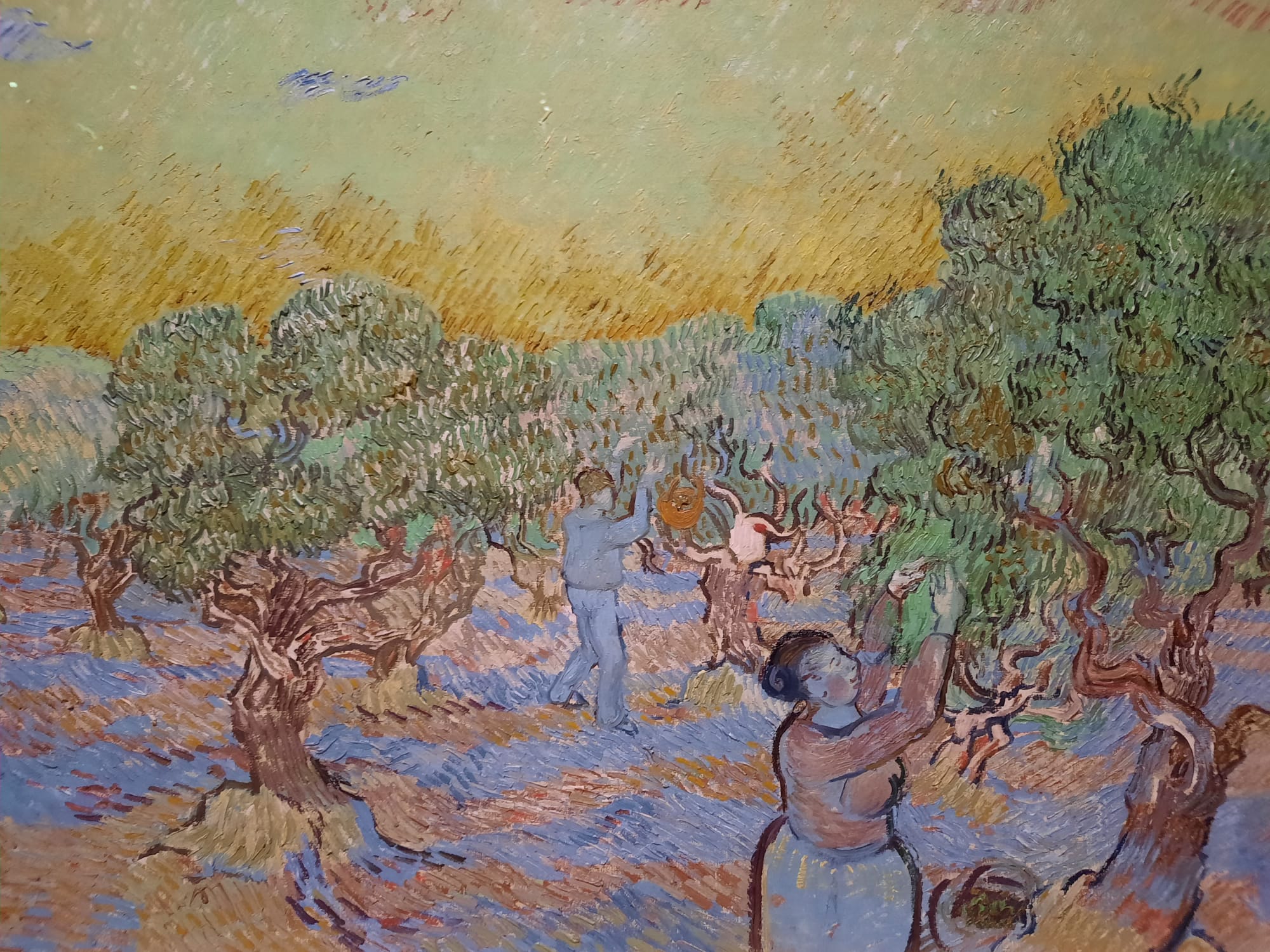
Excellent review thank you – and a refreshing take on an exhibition that the newspapers are perhaps a little *too* gushing about.
We went today and the crowds were really tiresome. Longer exhibition runs? Later opening? I don’t know, but it felt too busy and the whole experience was exhausting. And I agree – not enough places to sit down!
Thank you Gem and yes I agree, it really can be exhausting! I don’t know what the answer is, but will tell you if I ever find a way to visit National Gallery exhibitions the ‘right’ way.
Yes, an interesting point you identify in the review.
I do think the gallery was a little greedy with numbers – but I suspect it’s the price of being lent major van goghs from around the world.
I tend to stick my earphones in and listen to some relaxing music so I can zone out of the gallery.
If you listen to a playlist of the right kind of music and tempo, it can make it all more enjoyable.
Liam
A very good point about the cost of loans. And I will try relaxing music in future – I’ve only got as far as noise-cancelling earbuds so far, but those don’t quite drown out as much as I want them to…